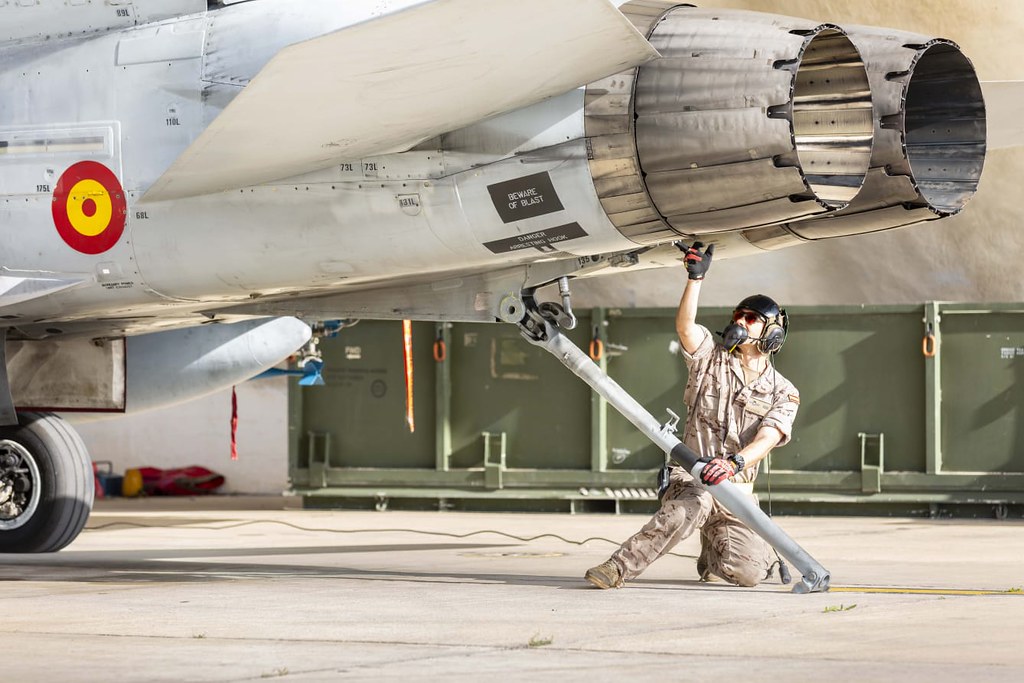The landing of a Spanish EF-18 Hornet fighter in Getafe using its arresting hook
The F/A-18 Hornet fighter-bomber was developed as a ship-borne fighter for the United States Navy and Marine Corps.
This condition of embarked combat aircraft can be seen in some characteristics of this aircraft, such as its robust front landing gear (typical of naval aircraft and formed by two wheels, instead of the single wheel that they have). in theirs the F-15 and F-16 fighters), its in-flight refueling system (of the probe and basket type, which is used by the US Navy and Marines) and its arresting hook, an accessory also known as a tailhook or arrester hook.

This hook is located between the nozzles. Naval fighters use it to brake in a very short distance when landing on the flight decks of large US aircraft carriers, decks equipped with four arresting cables. It must be said that there are many non-naval fighters that also carry this accessory (the F-15 and F-16, aircraft designed to land on runways located on dry land, for example). The reason they carry it is that this arresting hook can also be used at air bases in emergency cases, as long as the base has an arresting cable.

This Wednesday, Fly By Wire Aviation published an interesting video of the landing of an EF-18M with arresting hook.This landing test using the arresting wire was carried out at the Getafe Air Base, in Madrid, with an EF-18M Hornet from the 12th Wing, the C.15-44 (12-02): "The plane was centered on the axis of the runway and the braking systems were synchronized correctly. Subsequently, the to the release of the aircraft, and collection of the cable, resynchronization of the braking systems and commissioning of all systems," Fly By Wire Aviation says. This is something that is rarely seen:
---
Main image: Fly By Wire Aviation.
|
Don't miss the news and content that interest you. Receive the free daily newsletter in your email: |
- Most read
- The 'hole' without civil flights around Paris during the opening of the Olympic Games
- Stunning footage of the F-15QA Ababil in flight recorded from its cockpit
- The firearms used by the Pontifical Swiss Guard, the smallest army in the world
- Eurofighter vs F-35: the opinions of professional pilots on these advanced fighters
- The first photo of an F-16 fighter with Ukrainian insignia and the details it has revealed
- The most distant deployment of the Spanish Air Force in Australia and New Zealand
- This is the driver station of an M1 Abrams tank and the impressive start of its engine

 ES
ES







Opina sobre esta entrada: